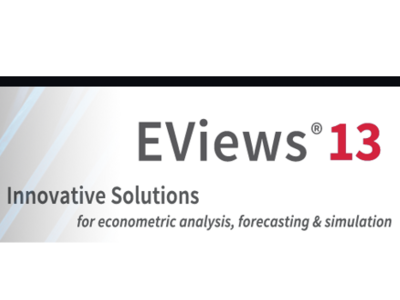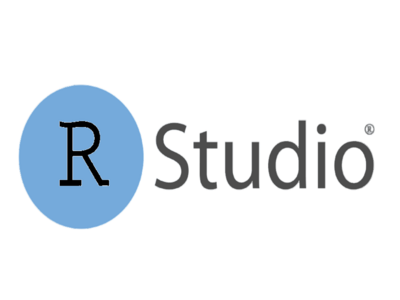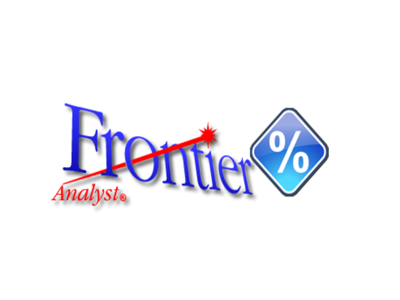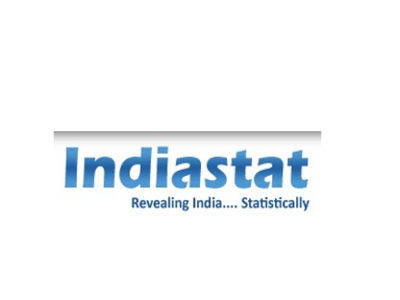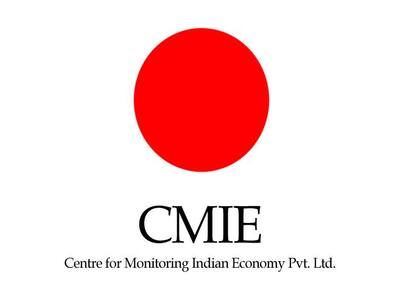❖ Anthropology and Sociology
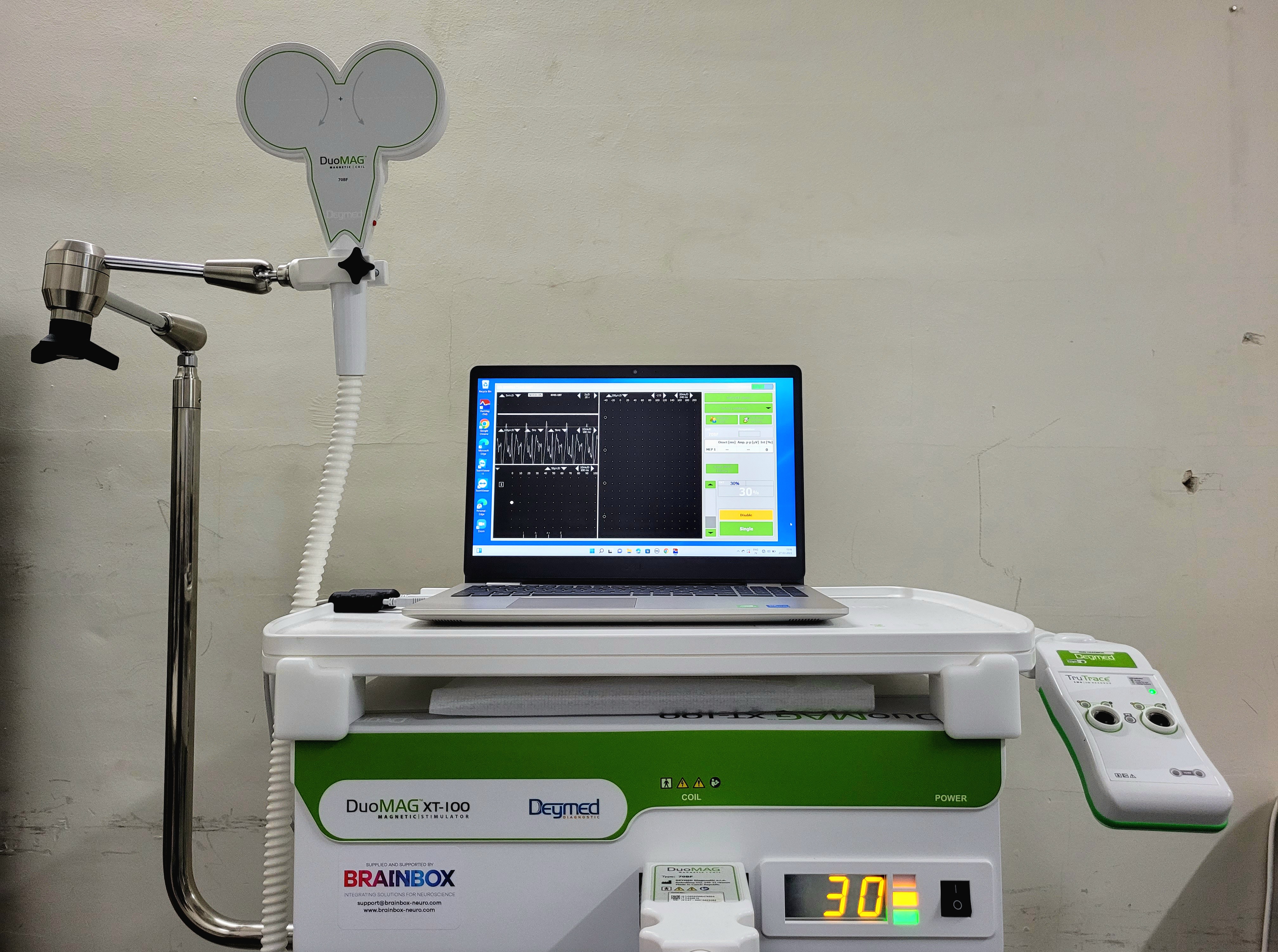
Electromyogram (EMG)
Two-channel EMG records muscle activity and Motor evoked Potential (MEP) in response to magnetic stimulation to measure cortical excitability.

Electromyogram (EMG)
Two-channel EMG records muscle activity and Motor evoked Potential (MEP) in response to magnetic stimulation to measure cortical excitability.

Electromyogram (EMG)
Two-channel EMG records muscle activity and Motor evoked Potential (MEP) in response to magnetic stimulation to measure cortical excitability.

Electromyogram (EMG)
Two-channel EMG records muscle activity and Motor evoked Potential (MEP) in response to magnetic stimulation to measure cortical excitability.

Electromyogram (EMG)
Two-channel EMG records muscle activity and Motor evoked Potential (MEP) in response to magnetic stimulation to measure cortical excitability.
❖ Cognitive Sciences

Transcranial Magnetic Stimulation (TMS) System
TMS is a noninvasive procedure that uses magnetic fields to stimulate neurons in the cortical brain areas. TMS can be used to inhibit or excite brain regions to assess their causal role in a cognitive process.

Electromyogram (EMG)
Two-channel EMG records muscle activity and Motor evoked Potential (MEP) in response to magnetic stimulation to measure cortical excitability.
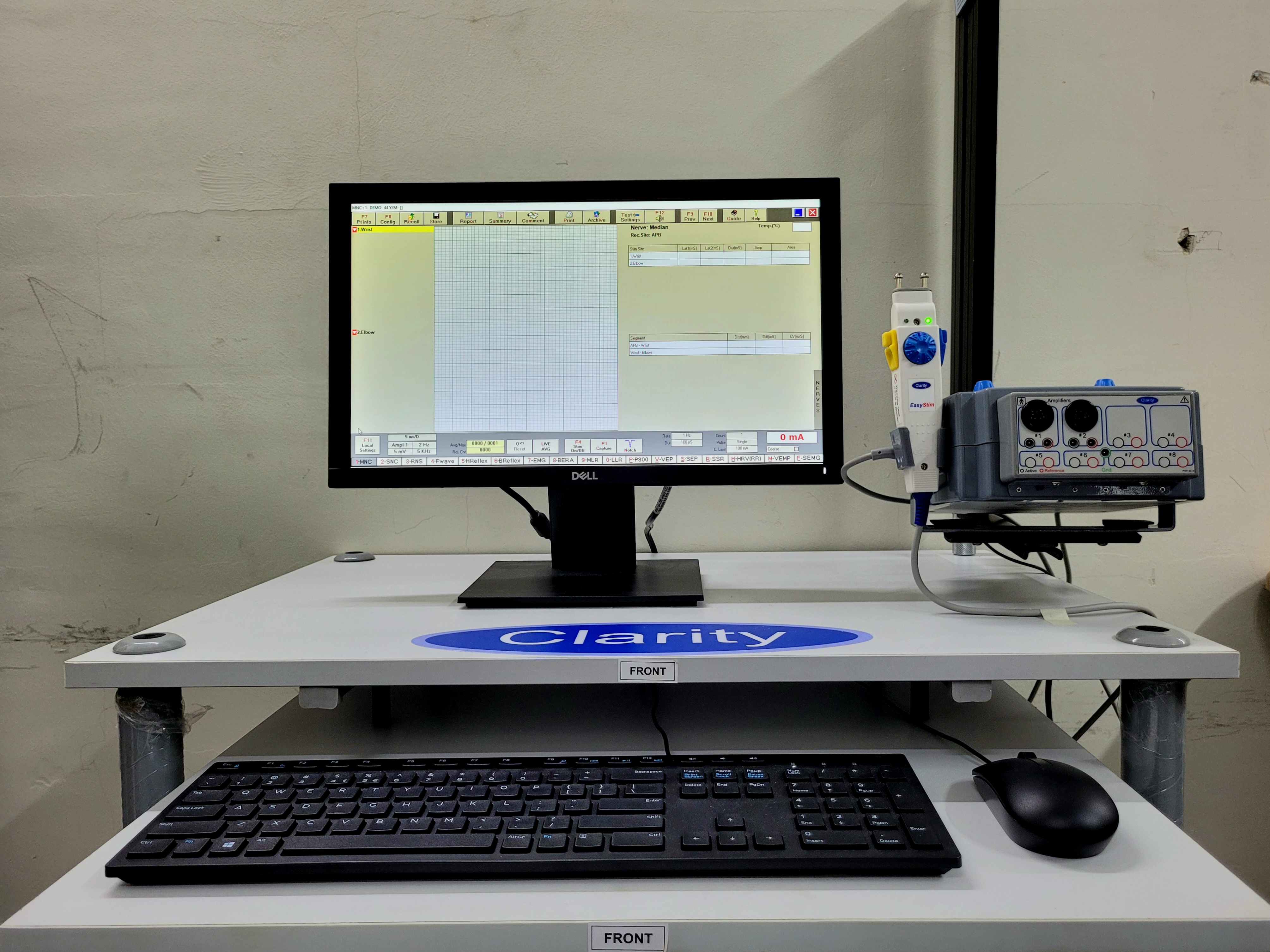
Nerve Stimulator
Nerve Stimulator is used for the peripheral nerve stimulation and measure the Sensory Evoked Potentials (SEP).
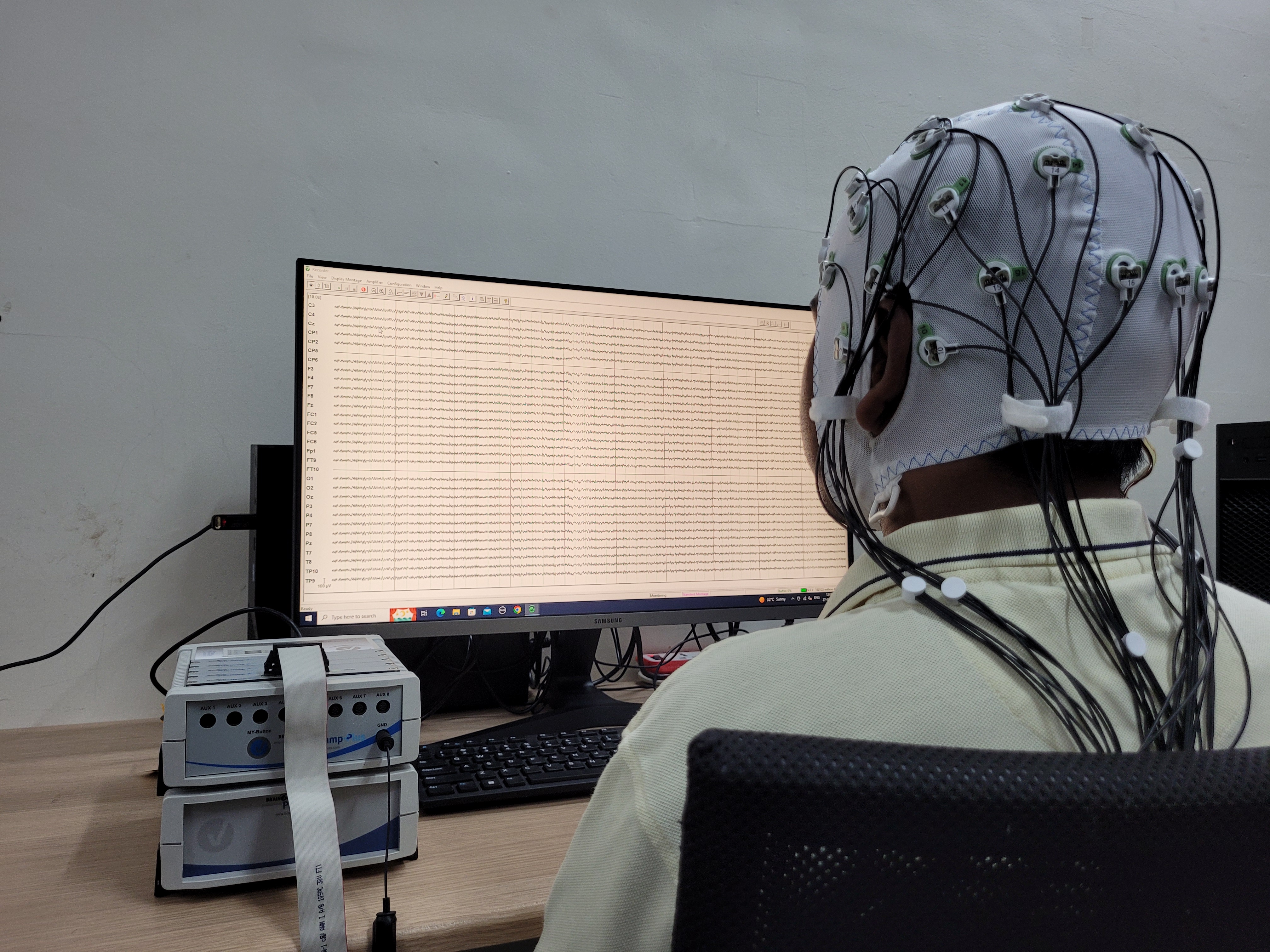
Electroencephalogram (EEG)
EEG measures the electrical activity of the brain using active electrodes placed on scalp. Real-time EEG data analysis can be used for performing closed-loop TMS.
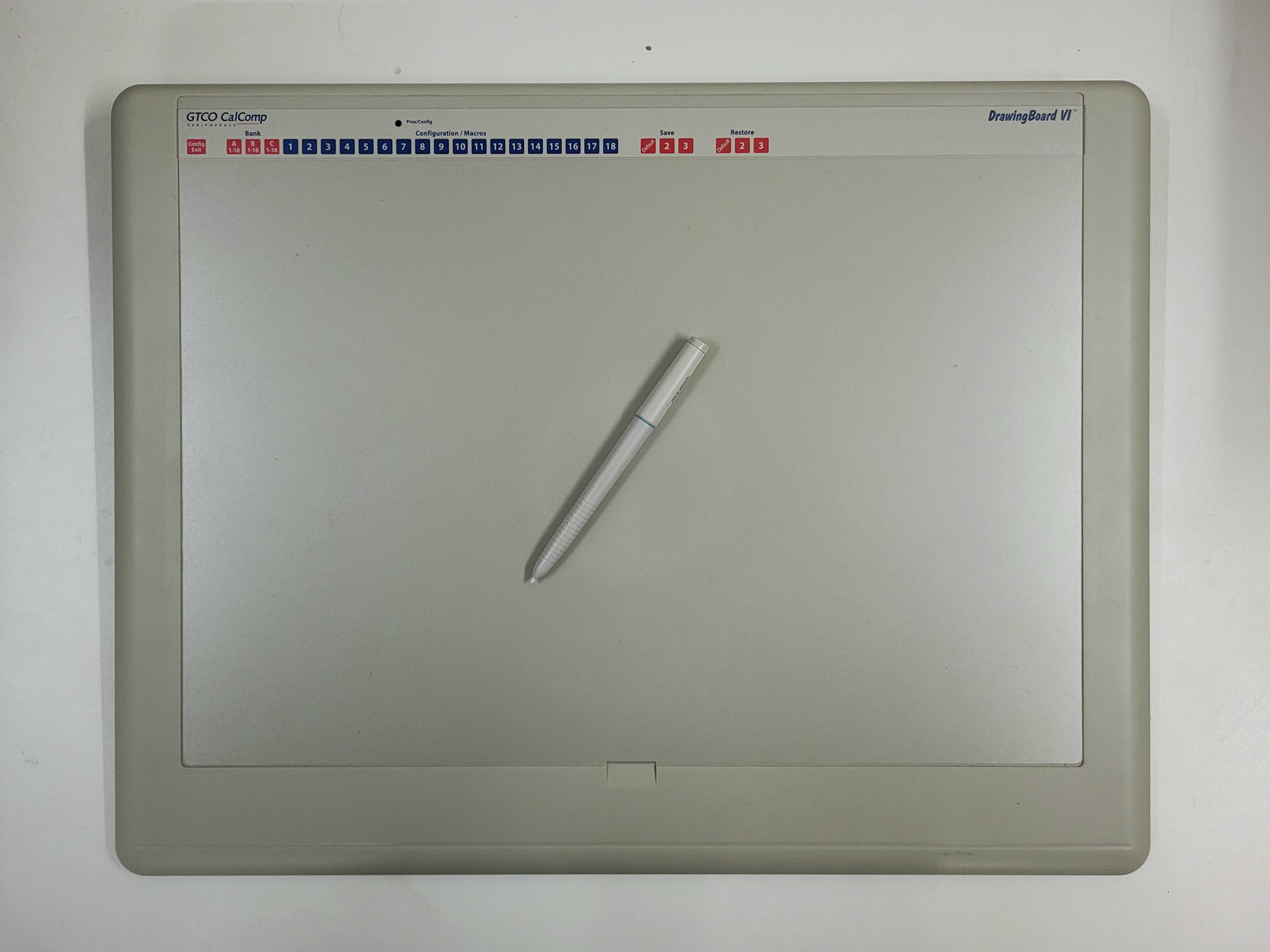
Digitizing Tablet
Tablet is used to record the hand movement through the stylus in various motor learning task.
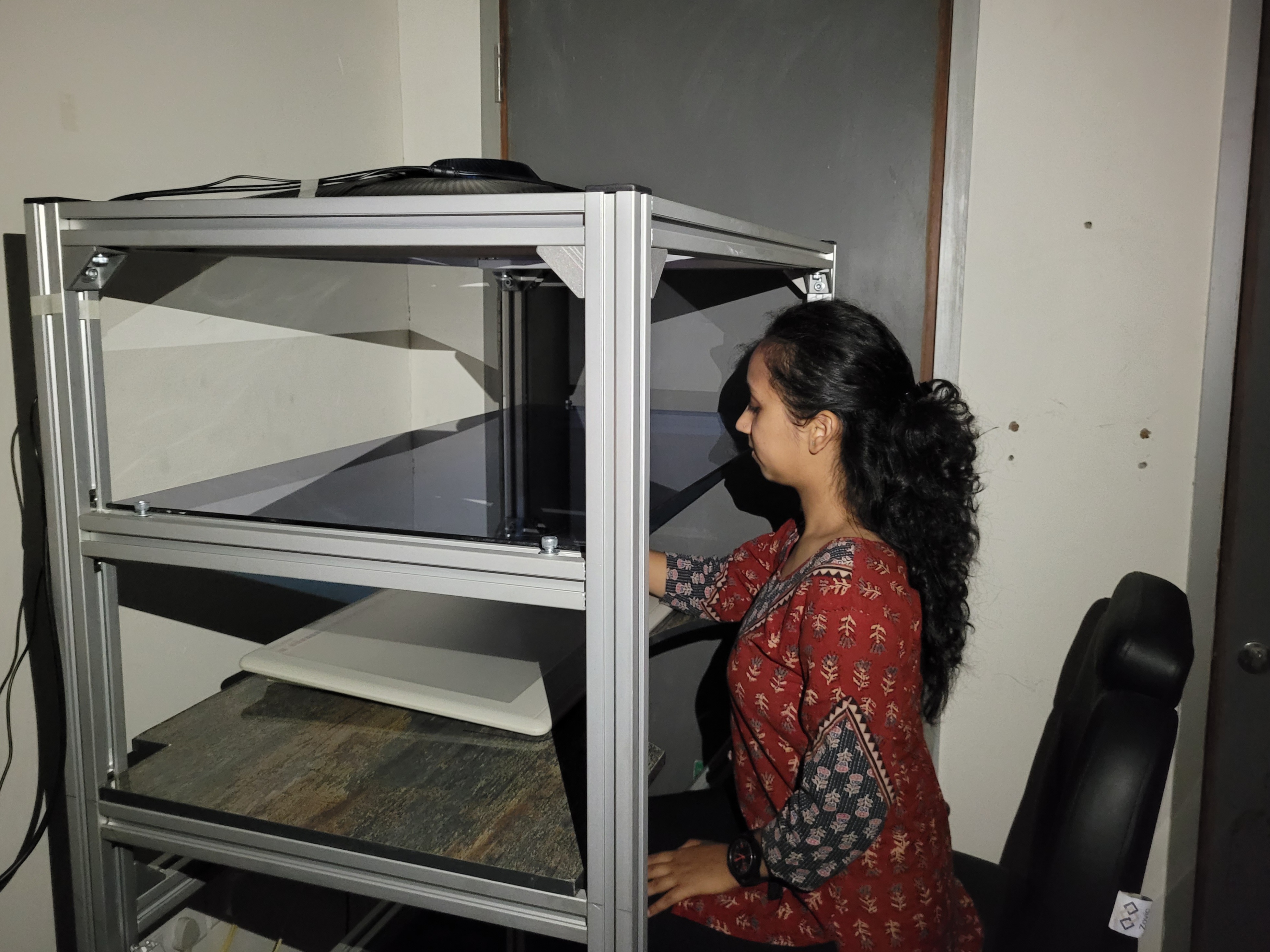
VR Frame Setup
Frame is used in combination with Digitizing Tablet to manipulate the visual information of hand position to induce various kinds of motor learning.
❖ Development Studies

STATA Software
Stata is a statistical software package that provides a comprehensive suite of tools for data analysis, data management, and graphics. It is widely used by researchers, economists, social scientists, and other professionals in various fields. It offers a user-friendly interface that allows users to easily import, clean, and manipulate data. It supports a wide range of data formats, including Excel, CSV, and databases, and provides powerful data management features such as sorting, merging, and reshaping datasets.
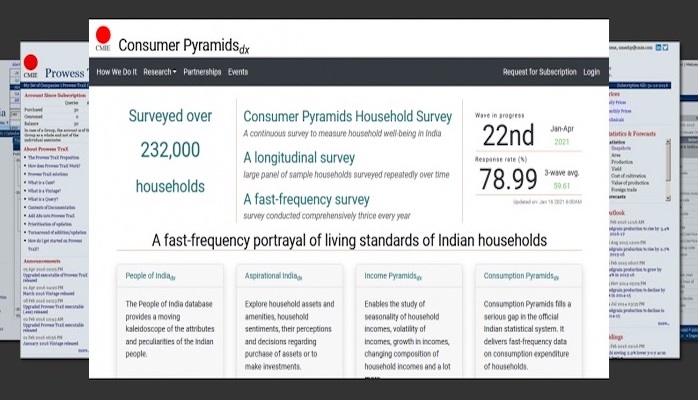
Consumer Pyramids Household Survey (CPHS)
CPHS is a survey conducted by the Centre for Monitoring Indian Economy (CMIE) in India. It collects data on various aspects of households, including their income, expenditure, savings, employment, education, health, and demographics. The CPHS is known for its large sample size and longitudinal nature. It follows a panel design, where a representative sample of households is surveyed repeatedly over time. This allows researchers to track changes in household characteristics, consumption patterns, and economic outcomes over time.
❖ Digital Humanities

Book2net Scanner
With the A2 size book2net scanner, users can scan research papers or books in .pdf, .jpg or .tiff format and can send the scanned copies directly from the scanner to their pen drive or email IDs. The scanner also has OCR software for the conversion of scanned images to text.

Desktop Systems
All computers in the Digital Humanities Lab are installed with the complete Adobe CC and Microsoft Office 365.
❖ Linguistics
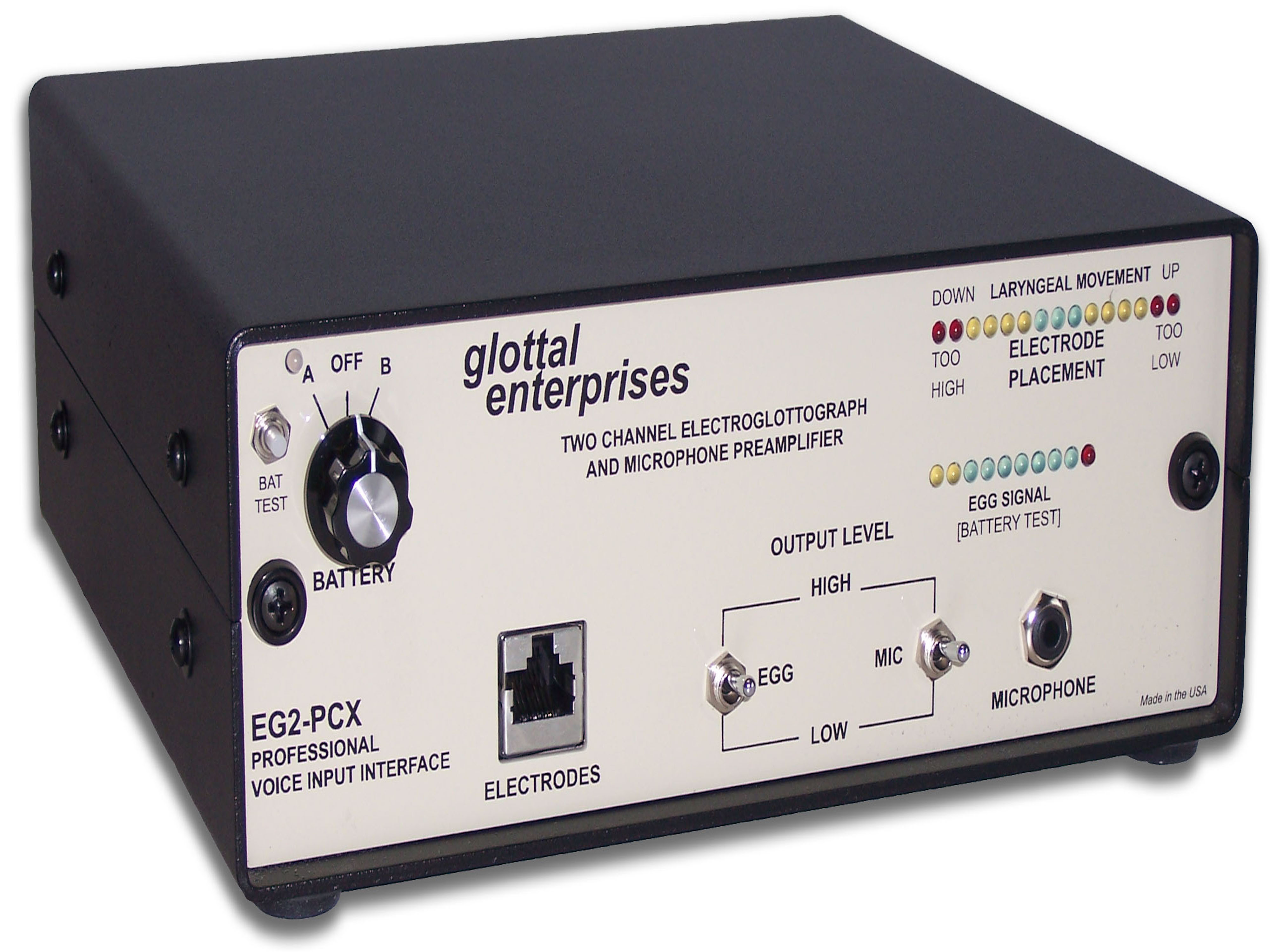
2-channel electroglottograph (EG2-PCX)
This is used to analyze speech data to find out certain patterns of voicing in order to gather evidence about our hypotheses on mental representations of sounds.

High-Quality Electret
This is a condenser microphone for the recording of high-quality audio for speech analysis. Since electrets come with a permanent built-in charge and respond best to frequencies within the lower-middle to high-frequency range, this microphone is well-suited to speech.
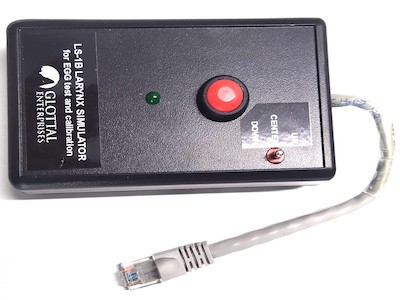
Larynx Simulator
This is used to simulate the activity of the vocal cords so that it can be plugged in instead of electrodes in order to generate test signals.
❖ Psychology

Transcranial Magnetic Stimulation (TMS) System
TMS is a noninvasive procedure that uses magnetic fields to stimulate neurons in the cortical brain areas. TMS can be used to inhibit or excite brain regions to assess their causal role in a cognitive process.

Transcranial Magnetic Stimulation (TMS) System
TMS is a noninvasive procedure that uses magnetic fields to stimulate neurons in the cortical brain areas. TMS can be used to inhibit or excite brain regions to assess their causal role in a cognitive process.

Transcranial Magnetic Stimulation (TMS) System
TMS is a noninvasive procedure that uses magnetic fields to stimulate neurons in the cortical brain areas. TMS can be used to inhibit or excite brain regions to assess their causal role in a cognitive process.
